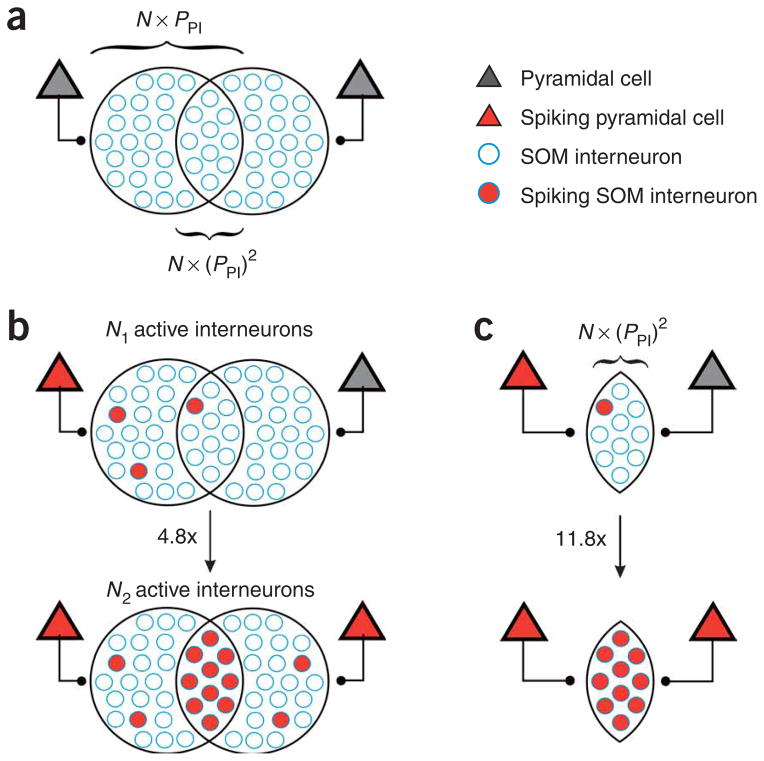Figure 5.
Increase in the recruitment of somatostatin-expressing interneurons. (a) Schematic of the projection of two pyramidal cells onto SOM interneurons. N is the total population of SOM interneurons; PPI is the probability of a pyramidal cell contacting a SOM interneuron; N × PPI is the population of SOM interneurons contacted by one layer 2/3 pyramidal cell; and N × (PPI)2 is the population of interneurons targeted by both pyramidal cells. The number of interneurons assigned to each population is for illustration purpose only. (b) Top, when only one of the two pyramidal cells is spiking, the N1 SOM interneurons are recruited (filled red circles). Bottom, when two pyramidal cells are spiking, almost five times more interneurons (N2) are recruited. (c) Within the population of interneurons receiving convergent input from two pyramidal cells (N × (PPI)2), the fraction that is recruited in response to the activity of two pyramidal cells (bottom) is 11.8 times larger than the one that is recruited by one pyramidal cell only (top; see Methods).

